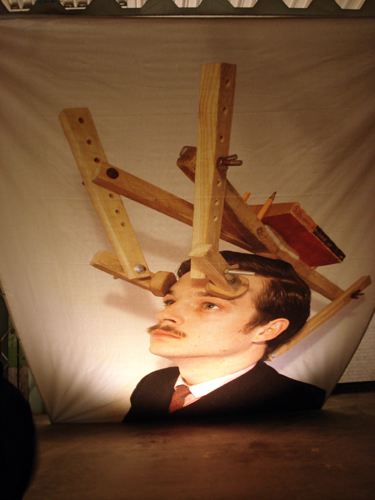
Angus Braithwaite,The Moment of Conception, JTG Gallery 2010
The Frieze Art festival in London this year opened a window not only to contemporary art from around world, but also to the economic climate of the arts market and artists' response to major budget cuts in funding. Over the week, as I attended various events, and spoke with artists and saw the threads connecting their works, one question emerged clearly in my mind: where does art fit into our current culture of recession, dichotomy and class?

One piece in particular strongly articulated questions and subjectivity relating to this topic. Cartier award winner, Simon Fujiwara's work 'Frozen' stopped people literally in their tracks who walked into the temporary Frieze Festival gallery in Regents Park. A litany of glass panels on the floor of the tent displayed dug outs in the earth, housing a treasure of artifacts and tools laid out to resemble an architectural dig. These glass floor panels and archeological 'sites' appeared intermittently in the walkways between the labyrinth of galleries. The installation also had a performance element to it: mock archeologists in the center of the festival space "excavating" and documenting on a drafting table, drowned in measurements and relics illustrating the "authenticity" of the dig. The meta-comentary of this installation was genius, as Frozen delicately poised so many layers of meaning amidst the highbrow art, (soon to be artifacts) filling every corner of the Frieze tent. As Simon Fujiwara states, "I am working with these modes of presentation for 'Frozen'(archeology), but since the city is complete fiction, I can use them to tell my own history - in this case a story about the origins of this ancient desire to collect and find value in art, which is something I wonder about myself when I'm making work... From the outset, I wanted this ancient civilization to raise questions about today's culture... The starting point for my work is that all art is autobiographical - that whatever an artist exhibits will be read against their life story, against the clues revealed by their name, their date of birth, their origins. This is the condition of art: it's about people, it's about the imagination of the individual and it's about life. That's why we love it.".

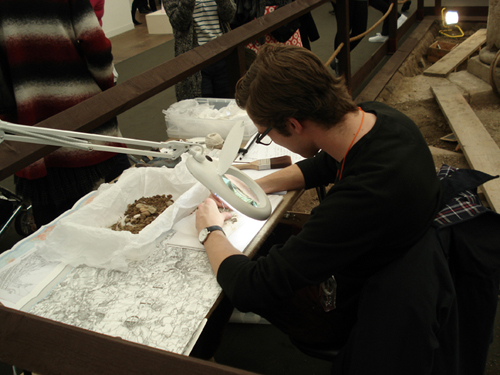
'Frozen', installation/performance, Simon Fujiwara 2010.
A dominant aesthetic seen throughout the galleries at Frieze was a kind a conceptual throwback in the style of Arte Povera. Arte Povera was introduced in Italy during the period of upheaval in the 1960s, promoting the notion of a revolutionary art, free of convention, the power of structure, and the market place. Media and constructions that used recycled or low-cost materials in the celebration and expression of simplicity rather then ornate refinement and extreme detail stood out in numbers at the exhibition. (see pics)
I also attended Moniker, the street art festival in East London which runs as a counterpoint to Frieze. This festival was created to showcase galleries and artists aligned with the Street Art movement.
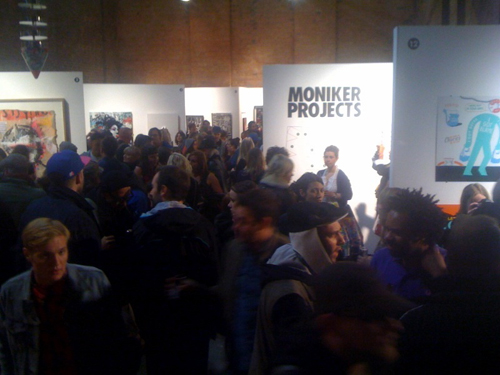
Moniker art opening.
In the non-curated forum of the city streets, artists created works that spoke of impermanence, messaging, and street codes. The exterior walls displayed the full expression of this movement, notably spray-painted mural size pieces, but only a selected number of better-known participants in the festival were permitted to paint due to the limitation of wall space. Inside the works were sectioned by galleries and archived on canvases, hanging from white partition walls, and stocked throughout Moniker's relatively small brick building. In this environment and scale, many artists lost impact when confined to canvas, devoid of the context of their work in public urban space, which frames their legacies, influence and historical relevance. But of course, artists from the streets foray into the festival/gallery world as documented by the Moniker festival is an product of our economic climate. Many of these pieces seemed to be tokens of their larger outside work, a notable manifestation of the element of commodity and exchange that is an awkward albeit necessary part of the economy of the art market. Without any additional funding sources to support artists who shape our cultural aesthetic and history - and, in this cityscapes, some fiscal exchange needs to take place, and one resolution has become the creation of wall size art for collectors and people to purchase. Having said this, some street art did and does translate onto canvas, retaining the lines, intentions and articulation that the artists developed within the urban landscape.
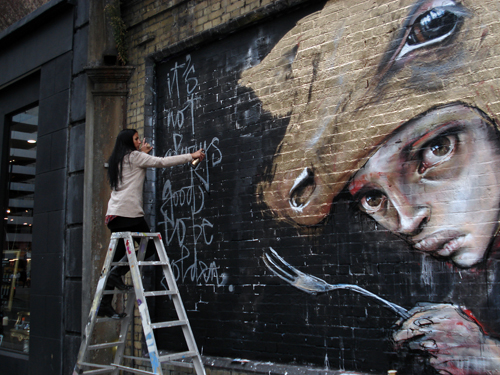
Moniker Art Fair, Herakut 2010.
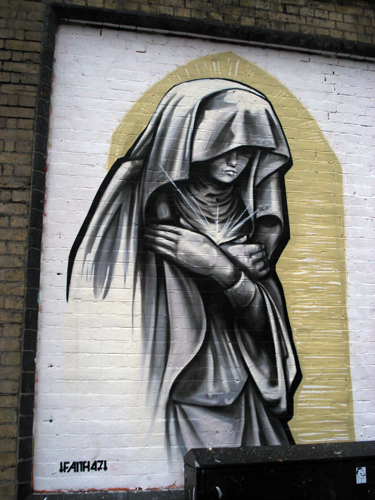
Moniker Art Fair, Faith47 2010.
Once revealed, the symbiosis of art and economy was visible everywhere throughout London's landscape. My friend Chino Soria, an Argentine sculpture and installation artist introduced me to the extremely vibrant alternative art scene where experimentation and reflection, instead of commodification, is reflected in the collections of numerous non-profit institutions, galleries, and art collectives. (see links below) At a banquet table in the JTG Gallery top floor of the space, artists, intellects, art professors and writers discussed a host of topics relating to the budget cuts, while a large exhibition filled the basement, ground and adjacent rooms on the second floor.
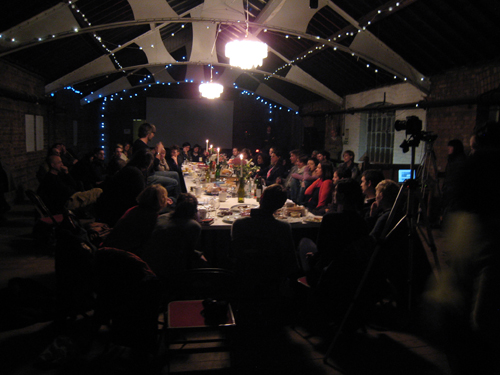
no.w.here & JTG event.
JTG is not a traditional gallery space, but is best described as an artist occupation of a 25,000 sq foot space in the East End awaiting finance for its planning permission for conversion to luxury flats. (sound familiar?) The event, entitled 'Recessional Aesthetics', was a durational, discursive event produced, staged, and facilitated by the context of the space and the conditions of our present moment. The event took place on the second floor of the gallery, and the preface was to create a day that 'will act as a durational discursive event, a coming together of individuals as a part of a collectivity operating in the threshold of the public and the private, an image, a staging and an active discussion'. From the event's literature:
We are witnessing different strategies of mobilization across the breadth of cultural production and we know that the arts are not alone, the public sector as a whole is to be cut and as such we all have different questions and pressures we are asking of ourselves on fundamental levels..
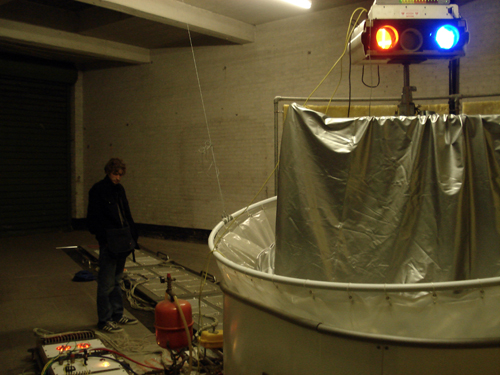
Lee Holden, JTG Gallery, 2010
http://jtg.org.uk/
http://www.no-w-here.org.uk/
http://carrotworkers.wordpress.com/
http://formcontent.org/
http://www.serpentinegallery.org/2009/06/edgware_road.html
http://www.basementartprojects.org/
http://www.antepress.co.uk/
http://callandresponse.org.uk/
http://www.fivestoreyprojects.com/
http://or-bits.com/
http://shiftgallery.com/default.aspx
http://www.ravenrow.org/
http://www.theshowroom.org/
http://www.drawingroom.org.uk/
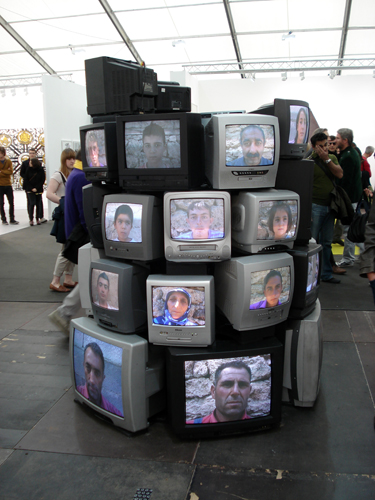
Frieze, Kutlug Ataman 2010
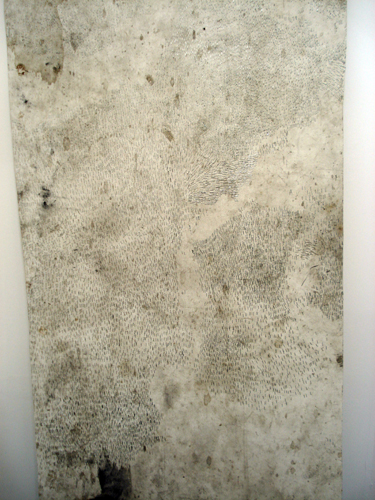
Frieze, Tariq Alvi 2010
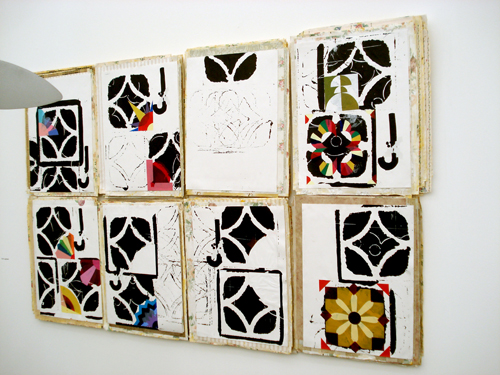
Frieze, Lisa Lapinski 2010
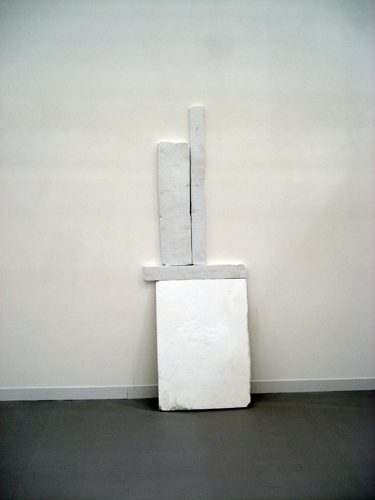
Frieze, Ugo Rondinone 2010
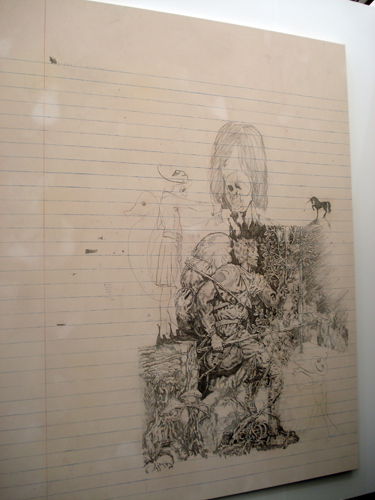
Frieze, Freidrich Kunath 2010
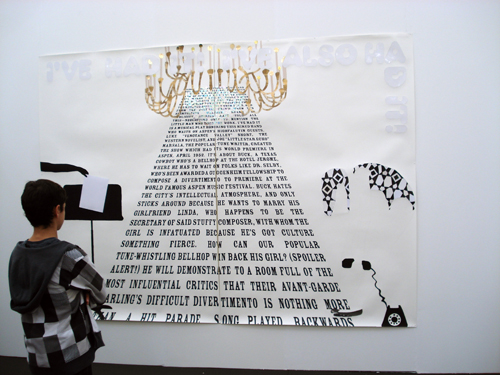
Frieze, Frances Stark 2010
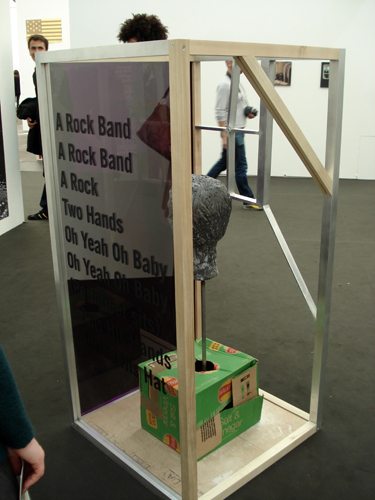
Frieze, Mateo Tannant 2010
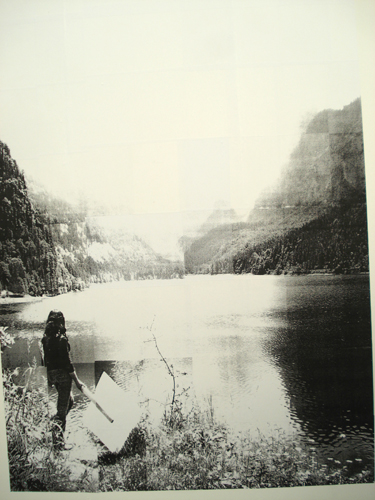
Frieze, Amalia Pica 2010
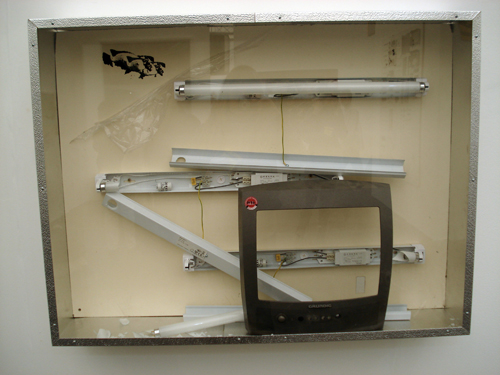
Frieze, Simon Denny 2010
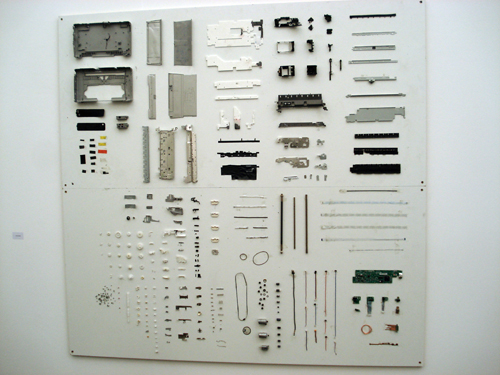
Frieze, 2010
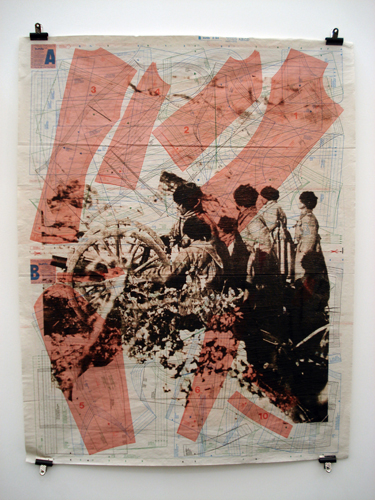
Frieze, Seb Fatane 2010
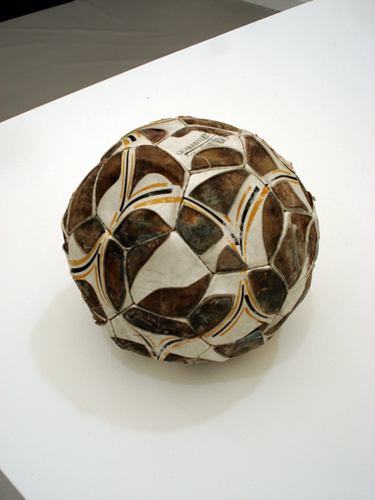
Frieze, Gabriel Orozco 2010
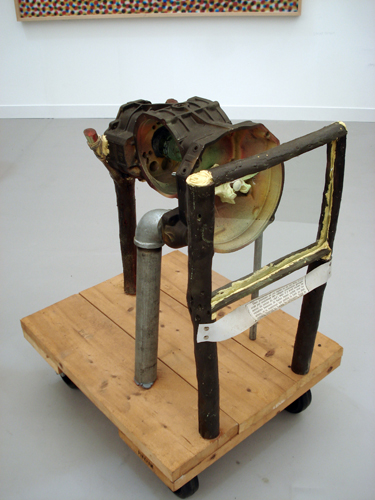
Frieze, Abraham Cruzvillegas 2010

Frieze, Sean Landers 2010
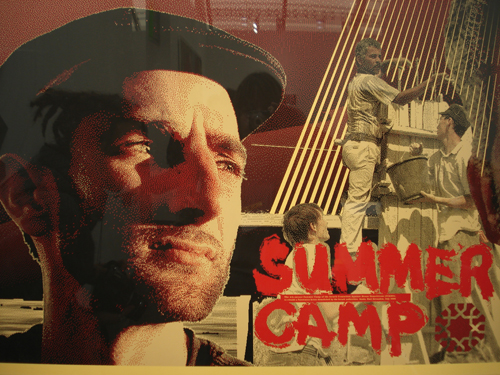
Frieze, Yani Burbama 2010
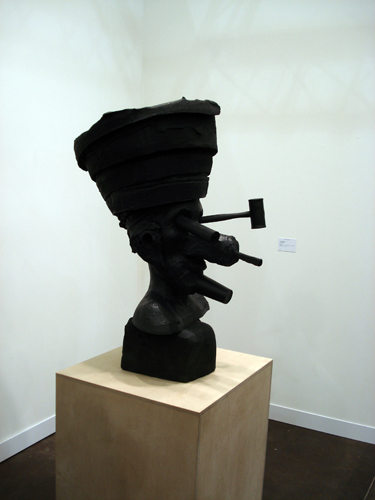
Frieze, Paul McCarthy 2010
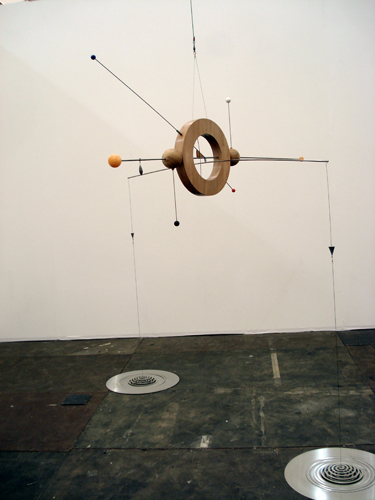
Frieze, Carlos Bevilacqua 2010
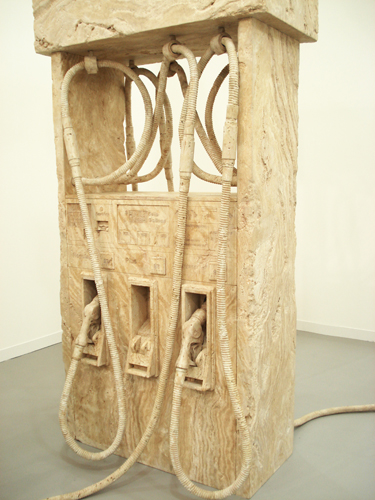
Frieze, Allora & Calzadil 2010
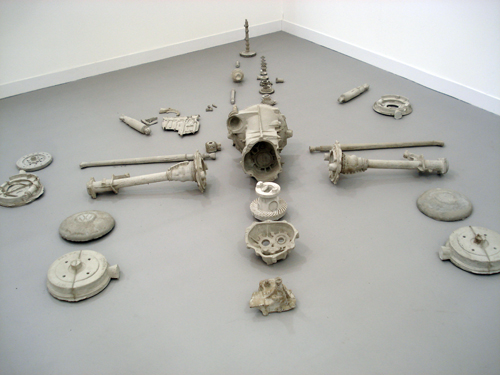
Frieze, Damian Ortega 2010

Frieze, Damian Hirst 2010
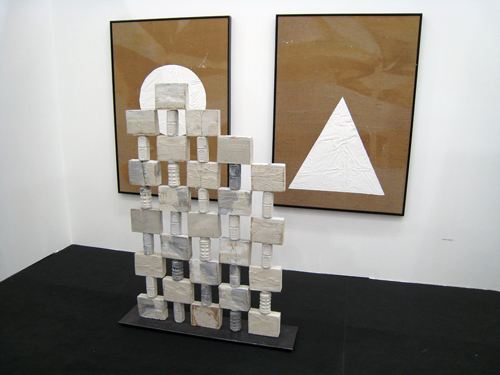
Frieze, Unknown 2010

No comments:
Post a Comment